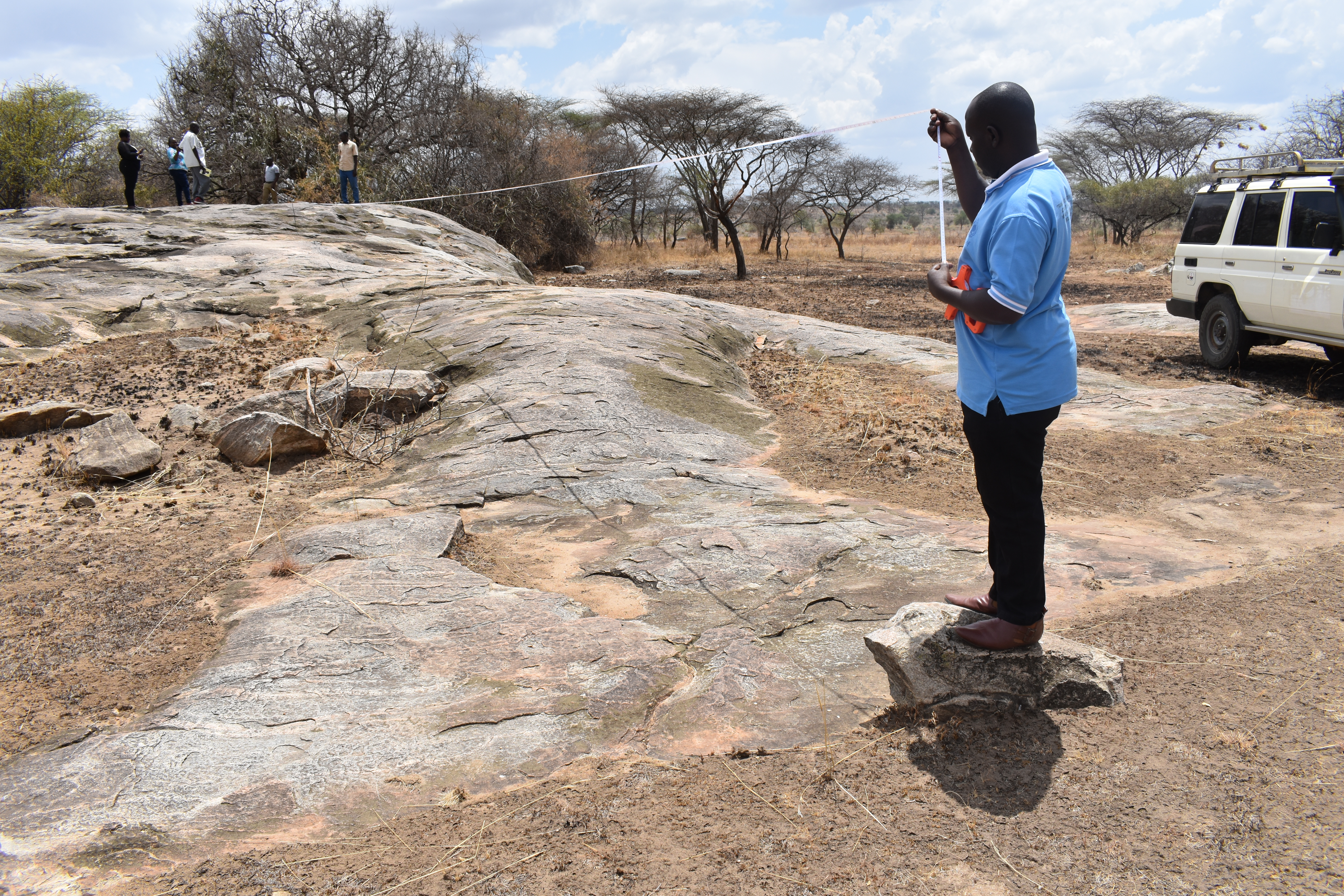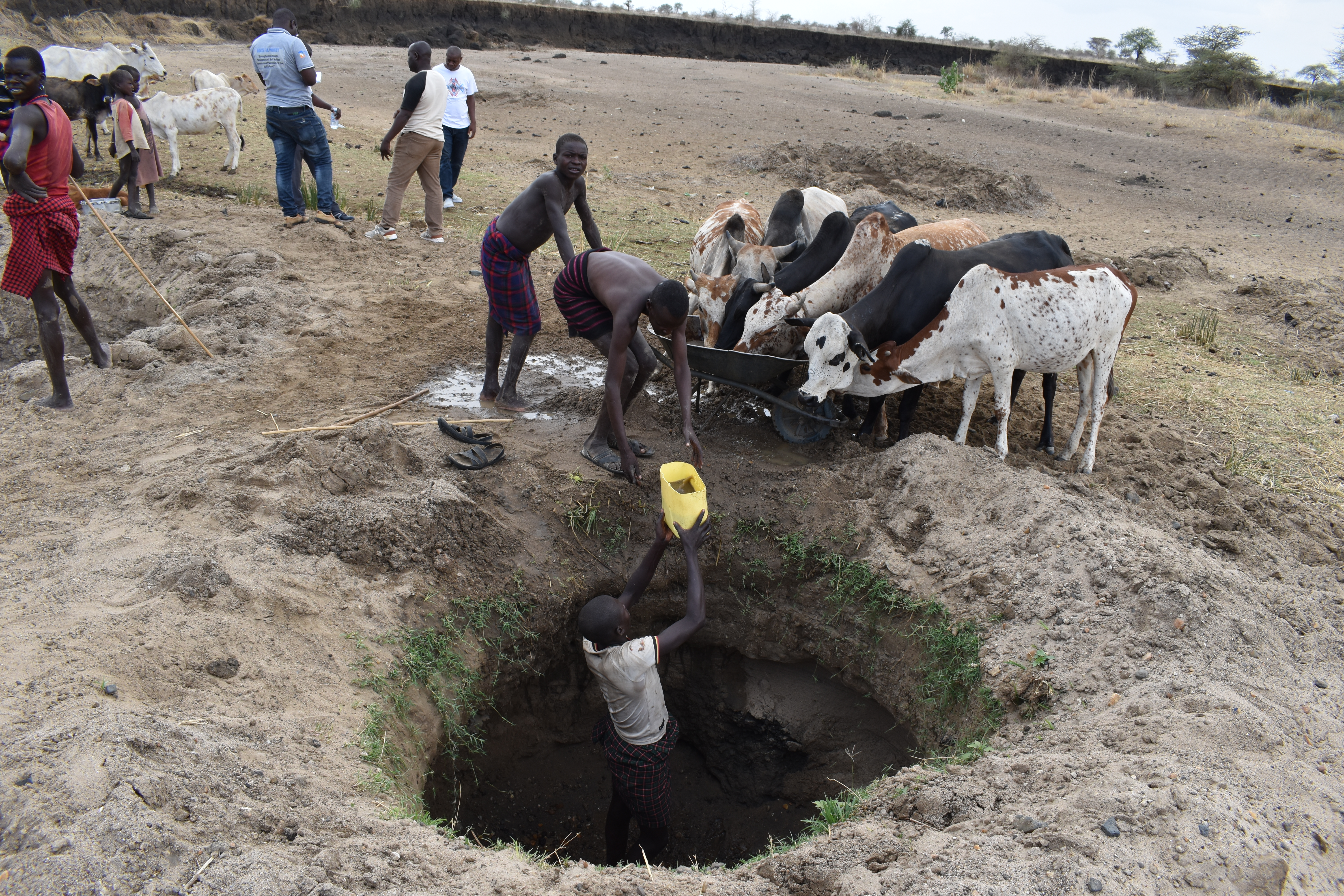Karamoja region in Uganda, one of the critical areas where the DRESSEA project is being implemented, is grappling with the pangs of drought. The region is within Uganda’s “Cattle Corridor” where drought has affected pastoralism and crop production, the main economic activities from which the communities derive their livelihoods. Two consecutive seasons of rain shortage have resulted into seasonal rivers, leading to shortage of water, and thus affecting agriculture which has increased famine, malnutrition and low productivity of crops and animals. Although most of the agro-ecological zones of Uganda are grappling with the effects of climate change and variability, the Karamoja sub-region is most affected.
For farmers and pastoralists to adapt to drought and climate change, the DRESSEA project is supporting them to undertake concrete innovative and appropriate sustainable land, water, crops and livestock management measures and technologies. The project proposes to construct simplified water harvesting structures which can easily be replicated by the community, among which are the sand dams, rock catchment water harvesting structures and compound water harvesting structures. The Uganda Program Implementing Unit assessed and verified the appropriate sites within the catchment and sub catchment management plans, where these proposed structures would be constructed. The sites include Lokere Catchment and Nangoloapolon sub-catchment in Nadunget, Moroto District where a sand dam is proposed to be established; Omanimani sub-catchment in Lokopo, Napak District, where a Rock catchment water harvesting structure will be constructed; and lastly, in Lotisan, Moroto District, where compound water harvesting structures will be constructed.

Measuring the proposed rock catchment water harvesting in Lotisan
The exercise of assessing and verifying the proposed sites was done through holding community meetings (below) and transect walks to gather preliminary information to guide in the design and construction of the water structures.

A meeting with community members of Lokere catchment in Nadunget to establish proposed sites.

The only sand dam available in the area where animals feed from
“Due to long dry spells, this sand dam (above) is the current available source of water for the animals in this locality”, said Rogers Azira, one of the project’s technical officers while demonstrating to the team, what remained of the only sand dam in the area. “Communities struggle to get water from ponds which are dug for their animals. Each group digs its pond in the middle of the dry river and the animals are given water in shifts by scooping water from the dug pond and pouring it in either a wheelbarrow or trough. Once the water is used up, they then wait for some time for it to regenerate. This is the only source of water for them. A sand dam is proposed for this site to solve the problem”, he added.

Scooping water and feeding the animals from wheelbarrows at the sand dam
Other climate change and drought adaptation interventions that the project will carry out include constructing mini-irrigation systems to support crops during water stress, underground water sources like boreholes and water wells, and promoting drought resistant pasture and crops to enhance the resilience of pastoralists and farmers. The project further aims to establish an innovative competitive grant scheme targeting household value addition to food crops as well as food crop and livestock products. The competitive small grants scheme will focus on encouraging and rewarding the efforts of the most vulnerable among smallholder farmers and pastoralists such as the women, youth and elderly.
